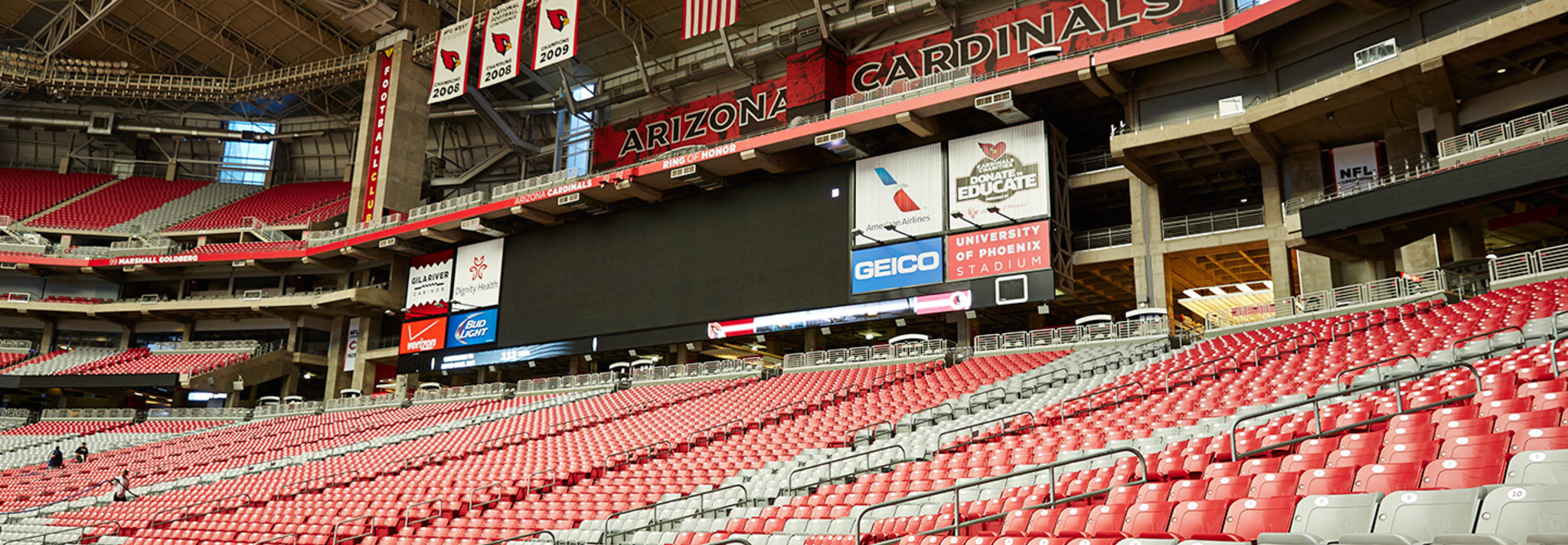Sloan 2016: Conquering the Challenge of Stadium Connectivity
It takes a specialized skill set to implement Wi-Fi networks at stadiums and other venues. Why is it so hard to build these big Wi-Fi networks? When the Institute of Electrical and Electronics Engineers designed the 802.11 wireless standard, it did not have big stadium deployments in mind.
“Wi-Fi was not designed for this,” says Rich Noonan, a team lead for connected solutions and the Internet of Things with CDW.
Noonan, who spoke Friday at a workshop on “Wi-Fi and Stadium Connectivity” during the MIT Sloan Sports Analytics Conference, has worked on numerous stadium Wi-Fi deployments for CDW, including the build-out at University of Phoenix Stadium that preceded the 2014 NFL season and Super Bowl 49, requiring the installation of 800 wireless access points (APs).
The goals of modern stadium Wi-Fi deployments are numerous:
- To provide in-venue services similar to what fans have at home
- To increase concession revenue by enabling mobile point-of-sale solutions
- To improve media capabilities
- To be prepared for special events
- To increase the productivity and responsiveness of stadium staff
Pointing Stadium Wi-Fi in the Right Direction
Among the most basic challenges that stadium wireless networks face is the need to deal with tens of thousands of users logging on simultaneously, Noonan says. Venues have to accommodate a vast number of competing users, most of whom have multiple devices. Even when these fans aren’t trying to use them actively, these devices automatically probe a network.
“Modern venues need to think in terms of ‘take rate’ – the percentage of fans who are expected to associate to a wireless network – and system capacity, rather than maximizing coverage per AP,” Noonan says.
One challenge that many large stadiums face is that the most expensive seats tend to be close to the field, where there is less infrastructure to support installation of APs. To address this issue, network planners can use directional antennas to point wireless signals toward users and away from the field of play, where the signal isn’t useful, Noonan says.
Planning for Stadium Wi-Fi Success
Noonan adds that careful design is critical to the success of a stadium Wi-Fi deployment. IT staff should conduct a radio frequency survey to determine the specific requirements of the venue. This survey should:
- Estimate cell size based on seating arrangement and Wi-Fi equipment
- Convey mounting locations accurately to installers
- Take into account venue stakeholders’ concerns for aesthetics and design
A typical project timeline requires at least six months to build out a stadium network infrastructure, then another one-to-two months of use at events to tune operations for optimal performance.
Noonan suggests that planning for a stadium wireless build-out should take place during the stadium design. IT leaders should be involved in dialogue when a stadium is being planned and designed – long before construction starts.
In this design phase, stadium operators need to understand their business objective before attempting to define the project. Meeting the demands of fans should be only part of the project, and the stadium network should also be considered as part of a larger marketing initiative.
But as they begin planning a massive Wi-Fi deployment, stadium operators are likely to find that their biggest challenge is not technical or even strategic, Noonan says. Rather, he says, it is to get all the stakeholders into at least one meeting to discuss challenges and needs.
For more information from the show, check out our complete coverage from the 2016 MIT Sloan Sports Analytics Conference.









